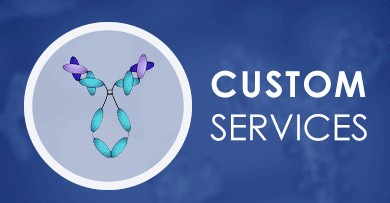 Loading...
Loading...

YWHAG
 Loading...
Loading...Anti-YWHAG Products
- Rabbit Anti-YWHAG Recombinant Antibody (clone SD20-65) (MRO-0006-CN)
-
- Species Reactivity: Human, Mouse, Rat
- Type: Rabbit IgG
- Application: WB, FC
- Rabbit Anti-YWHAG Recombinant Antibody (VS3-CJ1084) (VS3-CJ1084)
-
- Species Reactivity: Human, Mouse, Rat
- Type: Rabbit IgG
- Application: WB, FC
-
- Species Reactivity: Human
- Type: Rabbit IgG
- Application: ELISA, WB, IHC
- Anti-YWHAG Immunohistochemistry Kit (VS-0525-XY7991)
-
- Species Reactivity: Human
- Target: YWHAG
- Application: IHC
- Anti-Mouse YWHAG Immunohistochemistry Kit (VS-0525-XY7992)
-
- Species Reactivity: Human, Mouse, Rat
- Target: YWHAG
- Application: IHC
-
- Derivation: Phage display library
- Species Reactivity: Human
- Type: Rabbit IgG
- Application: ELISA, WB
Can't find the products you're looking for? Try to filter in the left sidebar.Filter By Tag
Our customer service representatives are available 24 hours a day, from Monday to Sunday. Contact Us
For Research Use Only. Not For Clinical Use.
Background
Disease related genes, Human disease related genes, Plasma proteins
Intracellular
Cell type enhanced (Suprabasal keratinocytes, Basal keratinocytes)
Low immune cell specificity
Low cell line specificity
Homodimer. Interacts with SAMSN1 (By similarity). Interacts with RAF1, SSH1 and CRTC2/TORC2. Interacts with ABL1 (phosphorylated form); the interaction retains it in the cytoplasm. Interacts with GAB2. Interacts with MDM4 (phosphorylated); negatively regulates MDM4 activity toward TP53. Interacts with PKA-phosphorylated AANAT and SIRT2. Interacts with the 'Thr-369' phosphorylated form of DAPK2 (PubMed:26047703). Interacts with PI4KB, TBC1D22A and TBC1D22B (PubMed:23572552). Interacts with SLITRK1 (PubMed:19640509). Interacts with LRRK2; this interaction is dependent on LRRK2 phosphorylation (PubMed:28202711). Interacts with MARK2 and MARK3 (PubMed:16959763). Interacts with MEFV (PubMed:27030597). Interacts with ENDOG, TSC2 and PIK3C3; interaction with ENDOG weakens its interaction with TSC2 and PIK3C3 (PubMed:33473107).

